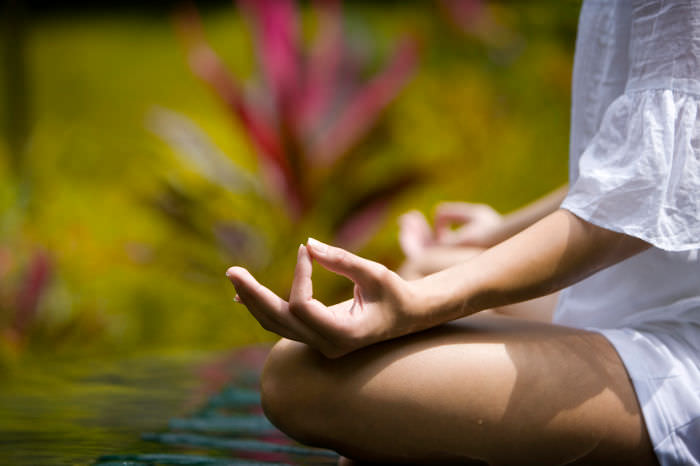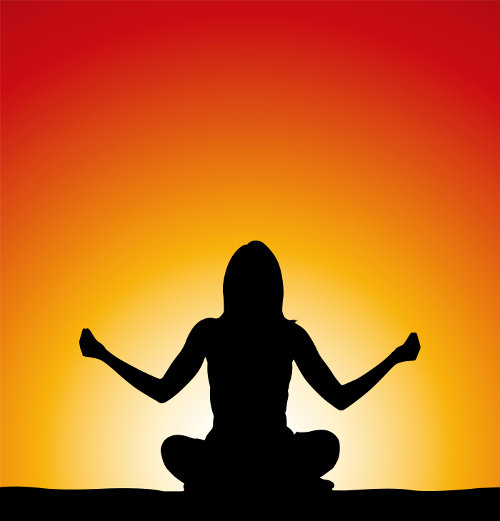
by Deirdre | Jan 3, 2019 | Resilient Mindset
Ahh, flow.
Many people I’ve talked to this year have made flow their word of the year. It’s one of those words that makes your mind and body just go “aaahhh.” We won’t resist, we’ll go with the things that present themselves. It will all be good.
(more…)

by Deirdre | Jun 12, 2018 | Mindful living
The power of daily habit is undeniable. Bit by bit you inch towards your goal. At the beginning you saw progress and it felt good. But there’s still a lot of work between you and the finish line. It’s not that you’re unhappy with the way things are going. It’s just slow going. Sometimes you feel stuck.
(more…)

by Deirdre | Feb 21, 2014 | Healthy Mind, Mindful living
The world can be a busy, overwhelming, noisy pushy place. I don’t know about you, but it’s hard to tap into my true motivation to stay healthy and balanced. I’m always looking for a soothing oasis of calm and comfort to regain a sense of internal harmony. I do better when those oases involve breathing, tea and moments of mindfulness. These are the “good” habit that I need to make room for in my life.
But staying with these kinds of good habits is deceptively difficult. They seem to be put to the backburner when other people’s needs rise up. It was worth doing some digging to find out a way to help me stick to them. A straightforward method has been developed by BJ Fogg. His method depends on picking the “right seed” – a tiny behavior that is a gateway to a steady habit. Then you pick the “right spot” in your day – adding it just after something you’re already doing. Coaxing it to grow depends on motivation.
Fogg doesn’t really believe in motivation. He feels that if you pick the right small behavior and sequence it right, then you won’t have to motivate yourself to have it grow. It will just happen naturally, like a good seed planted in a good spot. He claims that you don’t need to reach inside to find your true motivation. If you set it up right the new habits will flow like water.
This sounds good, but I’m betting we all have a trail of broken resolutions behind us. So we know instinctively that the story is more complex than this. There always comes a time when the effort of planning for this effortless moment is competing with something easier or more fun or soothing. The planning doesn’t happen and then the moment doesn’t happen.
True Motivation Rises up From Why
There are many times when we need the boost of true motivation to help us push through the hard or the inertia. We often think of motivational speakers or motivational quotes as being a great source for the push. It’s because they engage our emotions – they make us “feel” like we want to push through or “feel” shamed because we don’t want to. But Fogg is on to something when he cautions against waiting for this “feeling” to hit.
There are three kinds of true motivations that run deeper than waiting for the “feeling” to arrive and they are all based on knowing why you want to make the change. The most sustainable why is to feel good about what you’re doing.
- It’s got to be meaningful to you – maybe to others too, but definitely to you
- It’s got to be something you want to learn about and master
- It’s got to feel good along the way
Be True to You
You can count on your motivation when you’re changing for yourself. You have to see, feel and taste how awesome your life will be when you get this thing handled.
Sometimes we think that making big changes will buy us something we don’t already have. Things like confidence, love, respect and self-worth. In this case you’re dancing with your anxiety. Look deeply into the goal to see if you’re being influenced by the people around you and your environment to think you want something different.
Don’t choose a goal that is popular with the cool kids only to achieve it and feel like you’ve just done it to fit in. Choose a goal that is aligned with how you want to feel in your days and your life.
Be a Student of Your Success
Your success will change your life and who you know yourself to be. The things you learn along the way will be transformational. The successes will teach you as much, if not more, than the failures. Grit is what will see you through.
If you’ve outsourced the mastery part of your goal you may reach an endpoint that you’re happy with but you won’t really know how to keep it. I think some of the weight loss programs create this result. You can follow the program and get the results but you won’t have discovered what your body really responds to. You’ll be dependent on someone else’s process for success. A deeper, more satisfying success comes from learning how to make the change for yourself.
Make Feeling Good the Goal
Danielle LaPorte is on to something here with her Desire Map. Her approach makes the assumption that it will be easier to put in the grit and hard work if the goal makes you feel good along the way. If you understand that your deepest desire is to feel more connected – to people and life – then it becomes clear that working two jobs to buy a bigger house isn’t going to get that done.
This is a deeper and more sustainable kind of “feeling”. I don’t think anyone ever wakes up at 5 am and “feels” like they want to put on their runners and head out the door. But the connection with nature that you get when the sun starts to rise on a fresh new day is a very motivating kind of feeling.
How do you stay motivated to make the kinds of changes you want to?
Posted by Deirdre Walsh
Image by iStockphoto
If you enjoyed this post, please share it with your friends!

by Deirdre | Mar 7, 2013 | Inspired Living, Mindful living
A very good friend who has known me through many an up and down was over for dinner last weekend with her husband. We’re at a new stage — our kids go out for dinner without us, leaving us to fend for ourselves. This is a very different scenario from the days we started connecting over hot dogs and plastic plates. They brought over a bottle of Dom Perignon to celebrate our sort-of freedom. (I have to admit that it really made my week to be considered – to paraphrase Elaine from Seinfeld – Dom-worthy.)
She wanted to know what I’d been doing, health-wise, for the last while. She said she’s noticed a gradual, but consistent, improvement in my energy, weight, skin, and overall love of life. I couldn’t point to any one thing. It’s been doing hundreds of little things that have worked together.
I’ve learned an awful lot about what health really is since doing my training at Duke Integrative Medicine. I had a short bout with chronic fatigue a couple of years ago that made it all very personal. I’ve come to appreciate how much your body can really heal itself if you give it time and space. And it was really, really helpful to change how my body reacts to stress.
When I look at the habits that have made the biggest difference it comes down to four pillars of resilience:
- the type of exercise I choose
- working with how I put myself to sleep
- and, most effective of all, practicing different ways of mindfulness
Nourishment
One of the first things I did was look at how my patterns of eating were causing stress on my body. Was I doing a mini-starve during the day? Our bodies love regular meals. I learned how to balance the macronutrients in each meal and snack so that I wouldn’t cause an insulin spike. When your insulin levels go off they pull all your other hormones off kilter with them, causing a host of annoying side-effects.
I put sugar on a strict budget. I don’t like cutting things out entirely because I need at least the illusion of freedom. But having a sugar budget made me start really savoring my sweet indulgences.
I experimented with the possibility of food sensitivities by going on an elimination diet for a few weeks. I found I wasn’t really allergic to anything, but that processed carbs do add a certain pudginess that can’t be explained only by calories.
Being mindful about what my body was asking for gave me a lot of insight into stress. I know the stress hormones in my body are rising when I really feel like I deserve something sweet or a glass of wine. There’s a momentary belief that pops up that eating or drinking something will give me enough of a lift to make it through.
Things like sugar and alcohol make your body work overtime to heal from their effects. When that little voice is coaxing me I consciously choose foods that help my body heal – fruits and veggies full of anti-oxidants, or protein rich foods. I also worked with a couple of really great naturopaths who helped me find supplements that added to my energy and gave me a little more nutritional oomph.
I resisted mindful eating for a long time. But that changed when I realized it wasn’t about restricting how I ate. Instead I’ve added gratitude to my diet, with a pinch of breathing room, and finished with a soupcon of kindness. I put my fork and knife down after each bite and think about how I’m enjoying my food and my family. I try to use the daily routine of feeding a family as a guidepost for creativity. Sometimes I’m Matisse with a knife and other days it’s like painting on velvet.
Intentional Exercise
My biggest aha came from reading Spark by John Ratey. I knew exercise was important, but didn’t understand that exercise is the most powerful medicine we can take. Food is medicine but exercise really, really is medicine.
The more I read, the more I realized that you can change your body’s physiology by the kind of exercise you choose. Aerobic exercise is excellent to rebuild our brains because it stimulates a host of chemicals that act like fertilizer to rebuild our neurons. Interval and strength training increase our muscle mass and make us younger by stimulating human growth hormone and testosterone. Yoga balances our neurotransmitters and has a wonderful effect on our moods and anxiety.
In the early stages of recovering from burnout it was critical to rest and restore my adrenal glands and rebuild the way my body used energy. But over time something shifted and I didn’t notice. My body went from being burned out to being deconditioned. The symptoms are very similar – the main one is energy crashing after exercise. I found invaluable advice from Phil Maffetone in the Big Book of Health and Fitness and embarked on a six-month re-conditioning program. I admire my friends who do bootcamps, races and other amazing feats of strength and stamina. I hope to join them again when I’ve put in the slow, steady progress on the elliptical.
Restorative Sleep
During the worst of my burnout phase I would almost dread settling in for the night as I was almost guaranteed to be awake again a few hours later. The more I talk to women, the more I find this is a very common experience. It’s a drag the next day when you’re dragging yourself through the day, but what you’re really missing out on is the time to rebalance your hormonal levels to set you up for the next day.
The key to getting restorative sleep is to mimic the natural patterns of nature as much as possible. I try to shut down my computer and start turning off the extra lights at about 9. I sleep in total darkness with as few clothes as possible. I go to bed at 10, if I can. I try to be as relaxed and mellow as I can when I cozy into bed. These are all things that we can’t possibly fit in, but it’s good for us if we try.
Mindfulness
Mindfulness is really what changed my life. Mindfulness is many things, but the biggest difference for me was learning not to fight what was going on and to accept things as they were. This seemed like defeat at the beginning, but I began to see how I could conserve energy by not fighting reality. Then things had a chance to change – and they did.
I was at an amazing conference where Jon Kabat-Zinn, one of the early champions of mindfulness, said: “Everything that rises in your awareness is the curriculum.” I started to shift my reaction to the day’s events towards kindness, self-compassion, gratitude and right action. Some days better than others. Some minutes are better than others.
But in the end it was better, and healthier, than treating those events with bitterness, anger, resentment and blame. Each time I practice I get a little better at it and it gets a little easier the next time.
Posted by Deirdre Walsh,
Image: iStockphoto.
If you enjoyed this post, please share it with your friends!

by Deirdre | May 18, 2012 | Inspired Living
One of my favorite local yoga teachers is a bit of a hike for me, but well worth the trip to the country. She’s named her studio well as there’s a sense of peace just by pulling into the driveway. She’s a treasure of information about the body and its physiology, but her real brilliance lies in her suggestions to approach your yoga flow practice. As I hold the poses and listen to her encouragements, I often think how useful they are to life outside the studio.
Two encouragements that have travelled with me with my flow beyond the studio are “relaxation through action” and “fill the pose, and hold it actively with strength”.
Yoga Flow: Relaxation through action
Is it possible that moving into action doesn’t require meticulous planning, effort and sweat? I don’t have to marshal my forces, work on my list, and climb up that mountain of tasks? Clearly, I don’t have a graceful, flowing ability to get things done. So it’s a real shift in perspective for me to consider that taking action can be a way of getting relaxed.
On the mat it’s so easy to see where the extra effort I use to push into a pose is wasted and painful. As is the pointlessness of the internal chatter about how hard it’s going to be and how others find it easier, blah, blah, blah. In my daily life, it’s not always so clear. Sure, the pain is acute when I’m procrastinating on something important that will take focus and vulnerability. Finally getting into action is such a sweet relief. But do I remember how relaxing it is to get into the flow? Not often enough.
Yoga Flow: Fill the pose, and hold it actively
This thought gets me through many a wavering moment. With this encouragement, Gina asks us to engage fully in a difficult moment with all the energy and strength we can muster. As opposed to the half-hearted, floppy, droopy attempt that sometimes passes as my warrior pose. To me, filling out the pose translates daily into fully stepping into the difficult tasks or conversations and holding firm while staying open. It’s dealing with the discomfort in kind of a badass way. Instead of contracting from the discomfort, it’s a way of standing tall and saying bring it on.
This week my coach, Tara Mohr, was in town and I had the chance to see her at two different events. Brilliant woman herself, she’s written the 10 Rules for Brilliant Women – a guide to standing with strength and authenticity as you add your voice to the world. I love her take on filling the pose, with the rule “Be an arrogant idiot.” She’s not really counselling that we become that annoyingly confident self-promoter who’s so enamoured with their own unformed ideas that they convince the world of their (faux) brilliance. But she’s suggesting that we adopt their unwavering belief in their abilities and take a few steps in that direction.
Posted by Deirdre Walsh
Image: Yoga at Sunrise
If you enjoyed this post, please share it with your friends!





